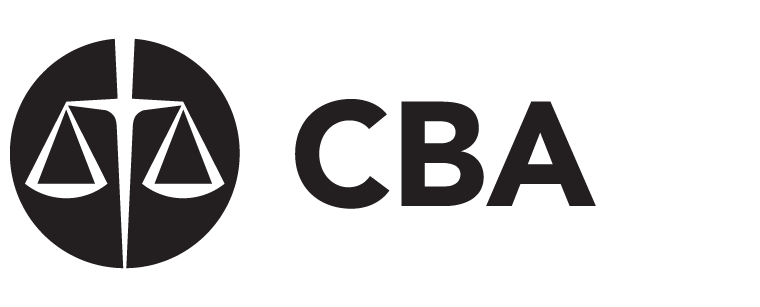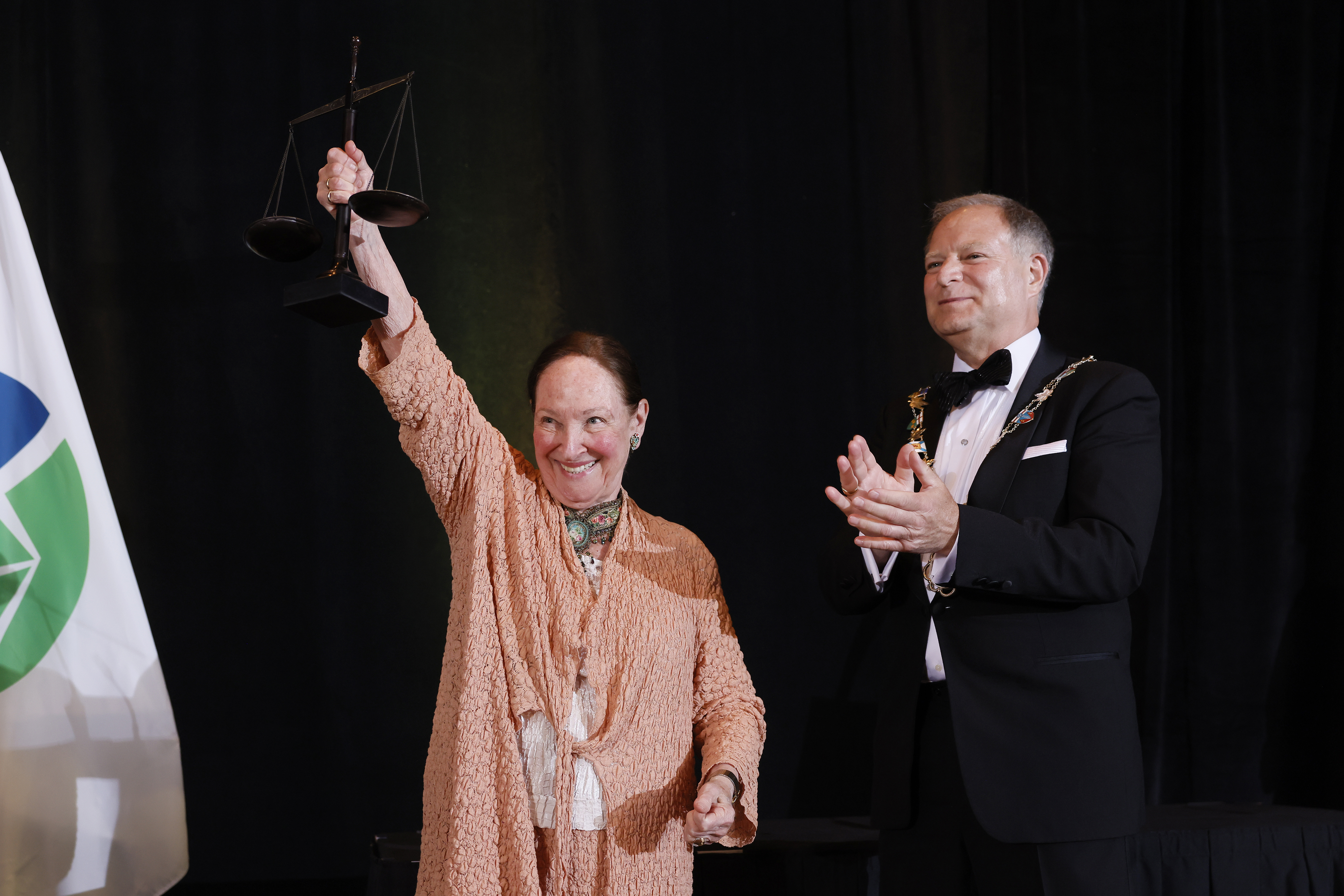I. Introduction
The Canadian Bar Association’s Intellectual Property Law Section (CBA Section) comments on the proposed changes to the Manual of Patent Office Practice (MOPOP) about the topic of patentable subject-matter. In June 2025, four revised chapters of MOPOP (Chapters 12, 17, 22, and 23) were published1 by the Canadian Intellectual Property Office (CIPO) for this consultation.
By way of background:
- MOPOP is a comprehensive guide to CIPO's practices relating to patent applications, patents, and related procedures. It presents CIPO’s interpretation of Canadian patent legislation and jurisprudence.
- Patentable subject-matter refers to the kind of thing that is patentable.2
A patentable invention under the Patent Act must be an "art, process, machine, manufacture or composition of matter" (or improvement thereof) and not a "scientific principle or abstract theorem", as those words are interpreted by the Courts.3
The proposed changes to MOPOP were instigated by two recent decisions from the Federal Courts: Choueifaty v Canada (Attorney General)4, and Canada (Attorney General) v Benjamin Moore & Co5 Both decisions faulted CIPO’s approach to patentable subject-matter and ordered it to reconsider the patent applications at issue.
In sum, the CBA Section is concerned that CIPO’s proposed revisions to MOPOP do not fully embrace the constructive criticism – and binding legal authority – in the Choueifaty and Benjamin Moore decisions. It appears that CIPO is still relying on an exclusive problem-solution approach to analyze patentable subject-matter, having simply shifted that approach to a later step in the analysis. In addition, the CBA Section is concerned with aspects of the analysis of computer-implemented inventions in revised Chapter 22, as well as ambiguities about what sections of revised Chapter 23 are being replaced.
II. CIPO continues to use an exclusive problem-solution approach
Recommendation
- The proposed revisions to MOPOP Chapters 17, 22, and 23 should be reconsidered. CIPO should use its expertise to devise a new analytical framework for patentable subject-matter that complies with the Choueifaty and Benjamin Moore decisions.
This recommendation follows from the CBA Section’s conclusion that the proposed revisions to MOPOP Chapters 17, 22, and 23 continue to apply an exclusive problem-solution approach to analyzing patentable subject-matter, contrary to the Courts’ rulings in Choueifaty and Benjamin Moore. This conclusion is based on the following analysis.
Current MOPOP uses a problem-solution approach
Under the current MOPOP, the analysis of patentable subject-matter begins with the Examiner determining a claim’s essential elements with a purposive construction. The Examiner then identifies the problem the patented invention aims to solve and the proposed solution as described in the patent application (i.e., the “problem-solution approach”, as set out in Chapter 12). The Examiner then considers whether the essential elements of the claim describe patentable subject-matter, as set out in Chapter 17 and apply to computer-implemented inventions in Chapter 22 and to biotechnology and medicinal inventions in Chapter 23. For example, sections 12.02.02e and 23.03.04d of the current MOPOP state:
One aspect of purposive construction is the identification of the essential elements of the claim. The identification of the essential elements of a claim cannot be performed without having first properly identified the proposed solution to the disclosed problem… Ultimately, some element or combination of elements defined in the claim must provide the solution. One must, however, approach each claim with an understanding that not every element that has a material effect on the operation of a given embodiment is necessarily essential to the solution. Some elements of a claim define the context or the environment of a specific working embodiment, but do not actually change the nature of the solution to the problem.
…
A diagnostic claim construed as being limited to essential elements that are disembodied (e.g., mental process, lacking physicality, no practical application, etc.) will be identified as defective for not complying with section 2 of the Patent Act...
Therefore, in the current MOPOP, patentable subject-matter is analyzed using the problem-solution approach, because this approach defines a claim’s essential elements and thus its subject-matter. The problem-solution approach, when used to the exclusion of all other approaches, was rejected by the Courts in Choueifaty and Benjamin Moore, as it did not clarify the purposive construction exercise.6 The Federal Court of Appeal (FCA) in Benjamin Moore held that the problem-solution approach cannot be the sole or overarching element of the determination of the essential elements.7
Proposed changes to MOPOP continue to use a problem-solution approach
The problem-solution approach to determining a claim’s essential elements has been eliminated from revised Chapter 12. In its place, a purposive construction is applied. CIPO’s approach to purposive construction determines only whether the elements of the claimed invention are essential or non-essential. However, “all elements set out in a claim are presumed essential” (section 12.02.02d).
Once construed, a claim is analyzed for patentable subject-matter. To do so, revised Chapter 17 provides a new focus on the “actual invention” of the claim and the extent to which the actual invention has physicality” (revised section 17.01). Revised section 17.02 states:
The FCA referred to the concept of an "actual invention" when noting that the determination of the actual invention is a relevant and necessary question in assessing patentable subject-matter.
…
To be both patentable subject-matter and not be prohibited under subsection 27(8) of the Patent Act, the subject-matter defined by a claim must be limited to or narrower than an actual invention that has physicality, either as something with physical existence or something that manifests a discernible physical effect or change…
Revised Chapter 17 then explains that the “actual invention” is the subset of essential elements that provide a solution to a problem and is not necessarily aligned with purposive construction or with the essential elements of a claim. Revised section 17.02 states:
The actual invention is not necessarily identical to the set of all essential elements of a claim. The actual invention generally consists of either a single essential element that provides a solution to a problem or a combination (Footnote 16) of essential elements that cooperate together to provide a solution to a problem… Where the actual invention consists of a combination of essential elements cooperating together, all of the elements of the combination must be considered as a whole when considering whether there is patentable subject-matter and whether the prohibition under subsection 27(8) of the Patent Act is applicable. [Emphasis added.]
…
An element of a claimed invention that is identified as essential for establishing the fences of the monopoly under purposive construction is not necessarily part of the actual invention. For example, an element may be an essential element of a claim only because the applicant intended to limit the scope of the monopoly being claimed to less than what the applicant actually invented. An element may thus be an essential element of the claim because the applicant intended it to be essential even though it has no material effect on the working of the invention (Footnote 21). Such an element would not form part of the actual invention because the fact that it has no material effect on the working of the invention means it does not cooperate with other elements of the claimed invention.
Accordingly, revised Chapter 17 instructs Examiners that while the process of purposive construction is intended to identify which elements of a claim are essential, the identification of the patentable subject-matter is directed to ascertaining the “actual invention”, which requires a determination of the “problem” and its “solution” in the claim. Contrary to the Courts’ instructions in Choueifaty, Benjamin Moore and Canada (Attorney General) v. Amazon.com, Inc.8. Chapter 17 clarifies that identifying the essential elements of a claim through purposive construction does not necessarily define what the “actual invention” is. However, Courts have stated that the assessment of patentable subject-matter, must be grounded in a purposive construction of the patent claims.9 It is this subset of essential elements that must consist of patentable subject-matter.
Crucially, in revised Chapter 17, finding the problem and a “solution to a problem” is not optional, nor does the chapter teach other ways of construing the “actual invention”.
The continued use of the problem-solution approach, under the guise of determining the “actual invention”, as the overarching framework for analyzing patentable subject-matter is illustrated by an example from revised Chapter 23. Revised section 23.03.04b sets out an exemplary claim to a diagnostic method:
- A method of diagnosing whether a human subject is at risk for developing cancer, comprising:
- measuring the level of X in a biological sample from the subject; and
- comparing said level to the level of a non-cancerous reference sample, wherein an increase in the level of X relative to said reference indicates the subject is at risk for cancer.
To analyze whether the claim has patentable subject-matter, section 23.03.04b first requires construction of the claim to determine whether any claim elements are essential or not essential, with a presumption that all claim elements are essential. Section 23.03.04b then takes those essential elements and from them construes the “actual invention” of the claim:
Purposive construction:
In claims 1 and 2, there is no use of claim language indicating any of the elements to be optional, a preferred embodiment or one of a list of alternatives. Nor is there any indication in the specification that would lead to a determination of any claimed elements being non-essential. Therefore, all the elements identified in the claims are considered to be essential.
Assessment of patentable subject-matter
In claim 1, an element of the claim is a correlation between cancer risk and the level of X. This element, when considered alone, is disembodied. The claim, however, further includes elements for measuring the level of X in step a) and comparing the level of X to a reference in step b). It is apparent that in order to arrive at a diagnosis of cancer risk, the measuring element, comparing element and correlation element must cooperate together. Thus, the actual invention of claim 1 consists of a combination of all of these elements. Recognizing that step a) is directed to physically measuring the level of X in the sample, it is evident that the actual invention has physicality and the subject-matter of the claim is patentable subject-matter according to section 2 of the Patent Act. [Emphasis added.]
It is clear from this analysis that purposive construction is limited to determining the “essentiality” of the claim elements,10 while patentable subject-matter is assessed through an evaluation of the “actual invention”. The “actual invention” is identified using a problem-solution approach: first a problem is identified (“diagnosis of cancer risk”) and the subset of essential elements (“the measuring element, comparing element and correlation element”) that provide the solution are identified. As this subset includes an element with physicality (the “measuring element”), the subject-matter of Claim 1 is patentable.
Proposed changes to MOPOP ignore Federal Courts jurisprudence
From the foregoing, it appears that CIPO’s approach to patentable subject-matter, even as revised, continues to rely on a method the Court has previously cautioned against and still fails to clarify the purposive construction exercise to determine patentable subject-matter. Ultimately, under both the current and revised MOPOP, for each claim, only a subset of elements is identified as providing a solution to a problem. It is this subset of claim elements that must consist of patentable subject-matter.
- Under the current MOPOP, the subset of claim elements is defined in Chapter 12 as essential elements, as determined using the problem-solution approach to purposive construction.
- Under the revised MOPOP, the subset of claim elements is defined in Chapter 17 as those essential elements making up the “actual invention”, as again determined using a problem-solution approach.
Fundamentally, CIPO’s proposed changes to MOPOP are to move the problem-solution approach from Chapter 12 to Chapter 17 and repackage it as determining the “actual invention”. Moreover, CIPO has not offered any alternatives to the problem-solution approach for analyzing patentable subject-matter.
CIPO’s revised approach ignores the binding authority of Benjamin Moore, where the FCA stated at para. 39:
[T]he error of the Commissioner in Choueifaty and in this case was not that she considered the problem and solution as part of her general assessment of the scope of the claims based on her reading of the applications as a whole, but rather that she identified the essential elements of the claims solely on that basis. [Emphasis added.]
Moreover, CIPO is stifling the development of the law. Rather than continuing to fight the same battle, CIPO should instead use its expertise to devise a new analytical framework to patentable subject-matter that complies with the decisions in Choueifaty and Benjamin Moore, as urged by the FCA. The Court in Benjamin Moore wrote, at para. 96:
At the end of the hearing, the panel urged the Commissioner to cooperate with IPIC so as to properly bring the issues that remain to be determined by Canadian courts, by issuing the decision that applies the appropriate purposive claim construction approach, and provides reasons that fully engage with these remaining issues.
III. Overly-prescriptive guidance on computer-implemented inventions in Chapter 22
Recommendation
- The proposed revisions to MOPOP Chapter 22 should be less prescriptive, particularly the undue emphasis placed on the preamble of the claim.
This recommendation follows from the CBA Section’s conclusion that revised Chapter 22 is overly prescriptive in how patentable subject in computer-implemented inventions is analyzed. Revised Chapter 22 continues to place undue emphasis on the preamble of the claim. For example, revised section 22.02.02 states that:
The preamble must clearly direct the claim to a physical product limited by the computer program stored thereon, and not to a computer program limited by having been stored in memory. Because a claim to physical memory falls within the category "manufacture", the preamble "a physical memory having stored thereon..." directs the claim to a potentially patentable embodiment, whereas "a computer program stored on a physical memory" directs the claim to a computer program per se and thus to non-patentable subject-matter.
In essence, the above statement requires the claim to be directed to a physical product limited by the computer program stored thereon. However, it is concerning that a rigid requirement regarding the phrasing of the claim preamble is being imposed. Such a requirement is not mandated nor suggested by Canadian case law.
Instead of this type of syntactic rule, MOPOP should emphasize a purposive construction, for example, as provided in Choueifaty. In this way, physicality should be examined within the context of the claim as a whole to understand the nature of the claim and determine whether the necessary physicality is present. CIPO should not impose reliance on precise wordings for the preamble or prescribe formulaic language. Instead, it should apply purposive construction to assess whether the claimed invention, considered as a whole, provides a physical embodiment or discernible physical effect.
IV. Ambiguity in draft revised chapter 23
Recommendation
- CIPO should clarify which sections of MOPOP Chapter 23 are being revised, replaced, or deleted.
This recommendation stems from the CBA Section’s observation that many of the sections and subsections found in the current MOPOP Chapter 23 are not found in the revised Chapter 23. We assume that revised section 23.03.04a will replace current sections 23.03.04a-d and that revised section 23.03.04b will replace current section 23.03.04e. In addition, it is unclear to the CBA Section whether current section 23.06.02 (Considerations respecting anticipation) will be replaced by or merely supplemented with revised section 23.06.02 (Defining a biological product by a biological deposit number). The CBA Section assumes that all other sections and subsections of Chapter 23 will remain unchanged and will appear in revised Chapter 23 in their current form.
V. Conclusion
The CBA Section has a serious concern that the proposed changes to MOPOP do not, in fact, reflect the Federal Courts’ decisions in Choueifaty and Benjamin Moore. The CBA Section – like the FCA before it – urges CIPO to use its expertise to revise MOPOP in a manner that complies with the Federal Courts’ jurisprudence and develop the law on patentable subject-matter that provides clarity to the purposive construction exercise.
VI. Summary of Recommendations
The CBA Section recommends:
- The proposed revisions to MOPOP Chapters 17, 22, and 23 should be reconsidered. CIPO should use its expertise to devise a new analytical framework to patentable subject-matter that complies with the Choueifaty and Benjamin Moore decisions.
- The proposed revisions to MOPOP Chapter 22 should be less prescriptive, particularly the undue emphasis placed on the preamble of the claim.
- CIPO should clarify which sections of MOPOP Chapter 23 are being revised, replaced, or deleted.
End Notes
2 D. Vaver, Intellectual Property Law 2nd ed. (Toronto: Irwin Law, 2011), at p. 286.
3 Patent Act, ss. 2, 27(8).
4 2020 FC 837
5 2023 FCA 168
6 Choueifaty at para. 39; Benjamin Moore at paras. 44-45.
7 Benjamin Moore at para. 41.
8 2011 FCA 328
9 Choueifaty at para. 39; Benjamin Moore at paras. 44-45; Amazon at paras. 42-43, 47.
10 Amazon at para. 44.









